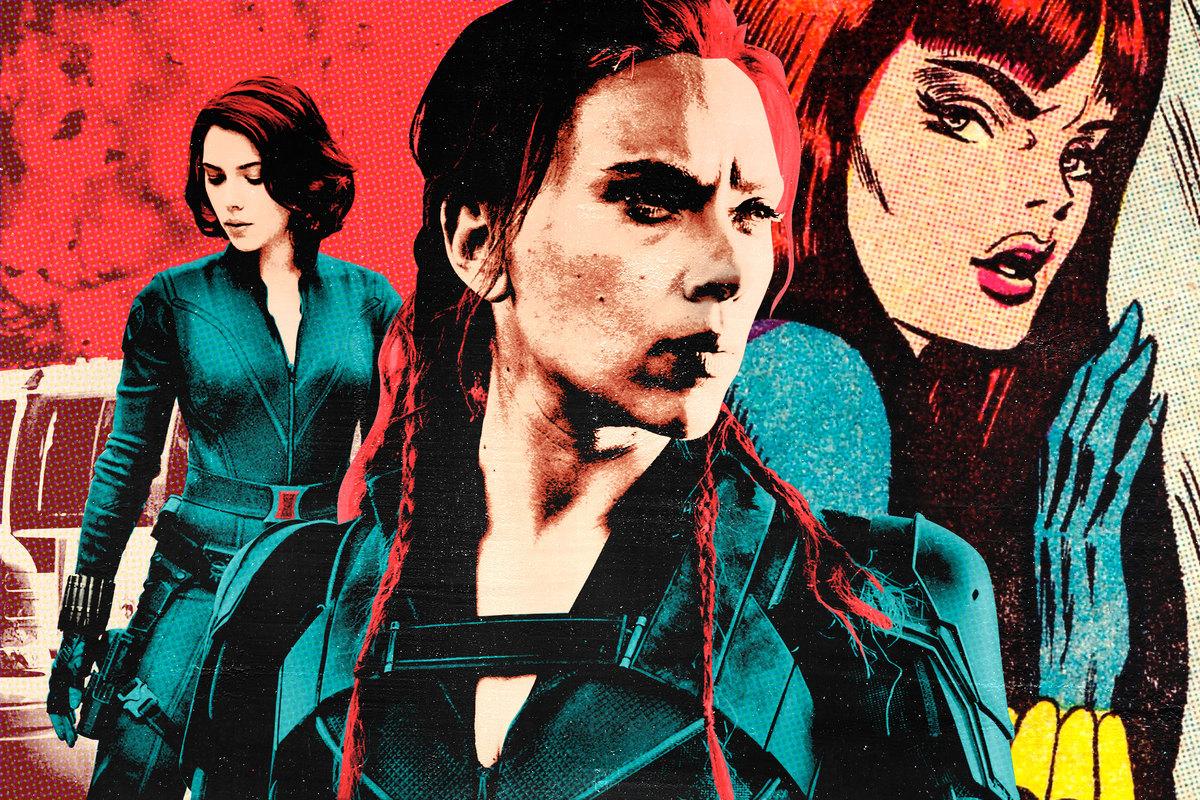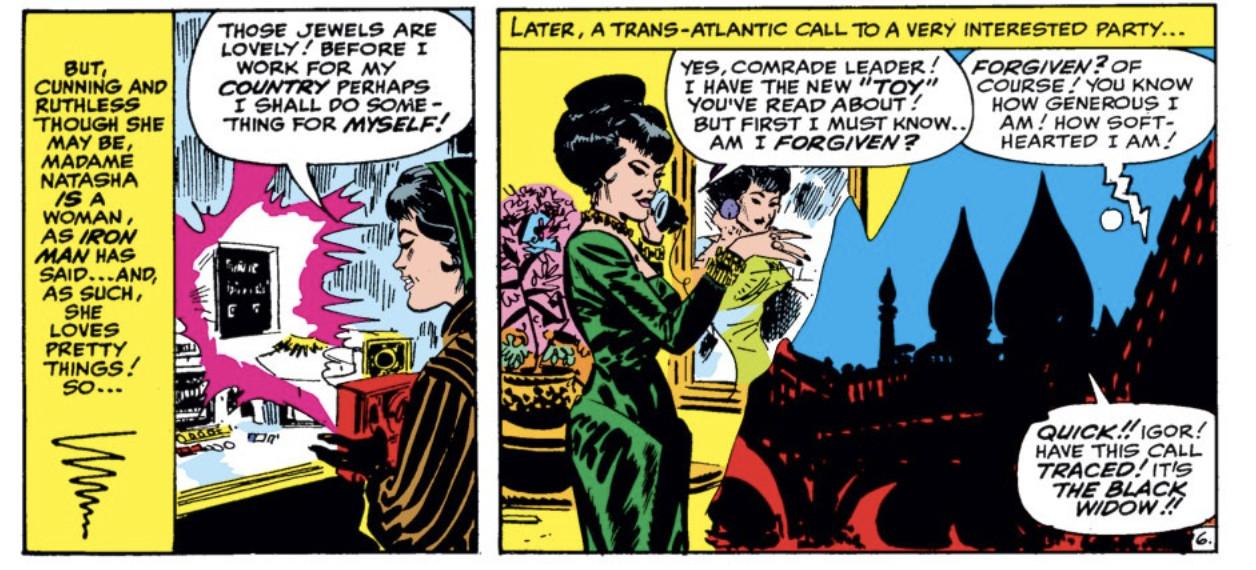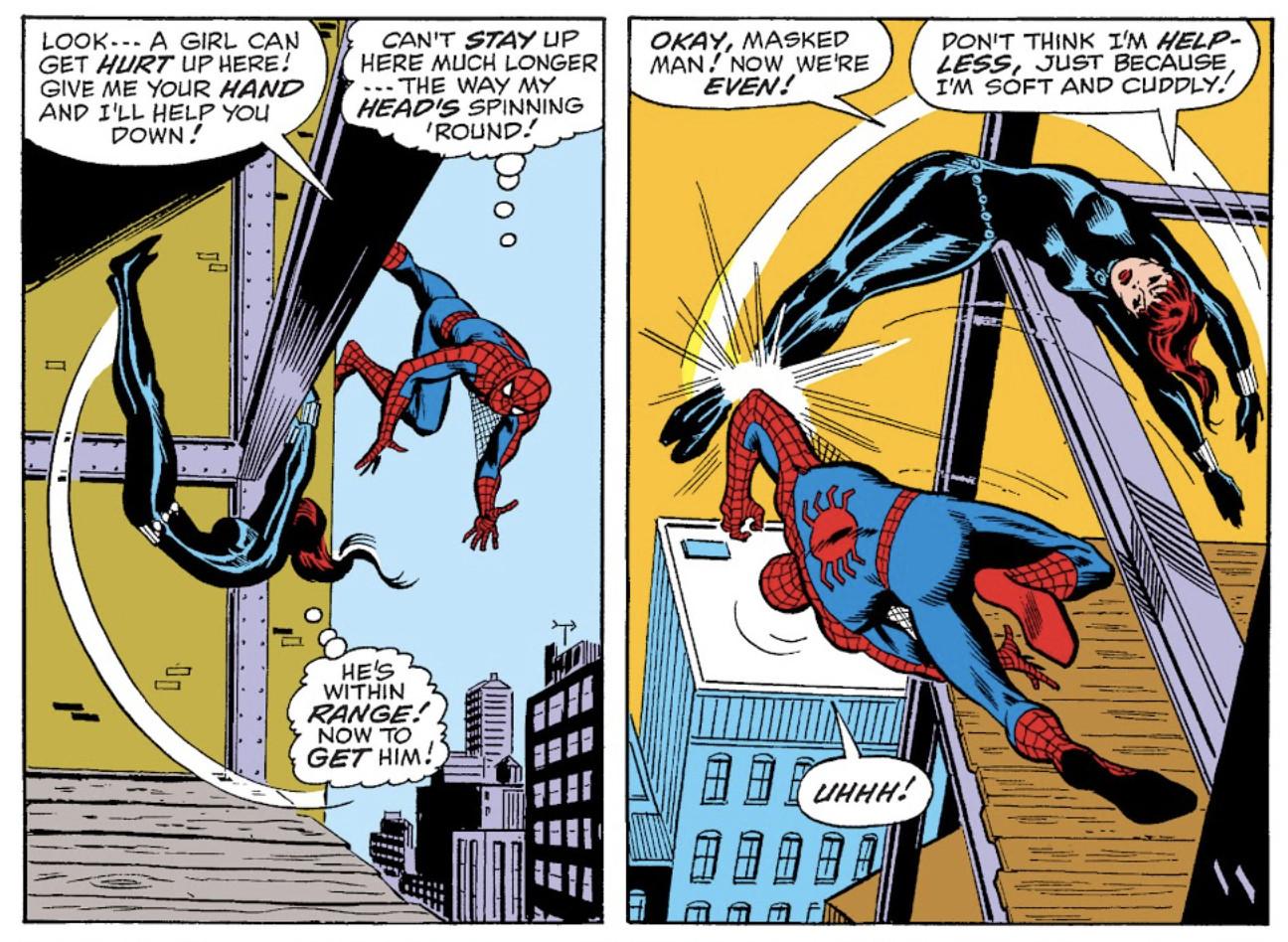
Eleven years, eight MCU films, and one pandemic later, Black Widow is finally getting her own movie. The cruel irony of Black Widow’s arrival, after years of fans asking for a stand-alone film for the MCU’s first female superhero, of course, is that Natasha Romanoff is already dead. During the time-traveling events of the 2019 blockbuster Avengers: Endgame, the former KGB agent and assassin made the ultimate sacrifice so that the Avengers could retrieve the Soul Stone and reverse the genocidal acts of Thanos. Rather than pick up where Endgame left off, Black Widow is set just after 2016’s Captain America: Civil War, with Natasha on the run after the Avengers’ breakup. By drawing the Black Widow out from the shadows of Tony Stark, Steve Rogers, and the rest of the Avengers, her previously unexplored past will finally come to light.
Black Widow continues the trend that has started in the MCU’s nascent Phase 4, as TV shows like WandaVision and The Falcon and the Winter Soldier have cast previously unsung heroes like Wanda Maximoff and Sam Wilson into the spotlight for the first time. No character or actor has been more deserving of a stand-alone feature than Scarlett Johansson or Black Widow, who, despite being the sole female superhero in 2012’s The Avengers, wasn’t even the first female lead in an MCU film. That honor belonged to Brie Larson’s Captain Marvel, whose 2019 debut somehow marked the milestone 21 films into the studio’s unprecedented run. And after being the only female Avenger for so long, Black Widow was noticeably absent for Endgame’s big “girl power” moment that brought together all the superheroines that the MCU had amassed by the end of its Infinity Saga. (Which, let’s be honest, was probably a win for her anyway.) Even though Marvel is cheating just a bit by turning back the clocks to an earlier part of its increasingly malleable Sacred Timeline, it’s a better alternative than never giving Black Widow the attention she’s always deserved.
Ahead of the release of Black Widow on Friday, let’s take a closer look at Natasha Romanoff’s past in the movies and the comics, as well as what might be in store for the Black Widow.
In the MCU
While Black Widow will finally give Natasha Romanoff a true origin story, her actual beginnings in the MCU serve as a reminder of how far her character has come. Johansson made her big-screen superhero debut in 2010’s Iron Man 2, but her character was initially little more than a sexist stereotype. Introduced as Natalie Rushman, Johansson’s Black Widow first appeared as a beautiful, mysterious new assistant at Stark Industries. In her very first scene, Natalie steps into a boxing ring with Tony Stark’s personal driver and friend Happy Hogan, who condescendingly offers to give her a lesson. “Who is she?” Tony asks his newly appointed CEO, Pepper Potts, as they watch from the sidelines.
“She is from legal,” Pepper replies impatiently. “And she is potentially a very expensive sexual harassment lawsuit if you keep ogling her like that.” After Tony proceeds to Google her and further ogle a series of photos he (somehow immediately) finds of Natalie modeling in underwear, the undercover S.H.I.E.L.D. agent hurls the unsuspecting Hogan against the boxing mat. As Tony maintains his gaze on Natalie as she walks out of the room, he turns to Pepper and quips: “I want one.”
In a recent interview with Time, Marvel Studios executive vice president of production Victoria Alonso described how she’s always been bothered by the line. “I remember thinking, ‘She’s not a thing,’” Alonso said. “But how apropos: The world sees a sexy woman and thinks that because she is beautiful, that’s all she has to give.”
The scene set the tone for how Natasha would often be treated in the early phases of the MCU, even after she’d been revealed to be one of Nick Fury’s top S.H.I.E.L.D. operatives. From undressing in the back of Happy’s car later in the film to being reintroduced in a revealing dress while tied to a chair in 2012’s The Avengers, the lone female member of the superteam is objectified and sexualized far more than her male counterparts. Even her story line in 2015’s Avengers: Age of Ultron focuses largely on a budding romance between her and Mark Ruffalo’s Bruce Banner, a strange development that is only awkwardly acknowledged in passing when they’re reunited a few movies later in Infinity War. “She was a character created for the male gaze,” Black Widow director Cate Shortland told Time when describing her impressions of Natasha’s previous MCU appearances. “Initially, even the way she moved, the way she dressed—it was helpful as a stepping stone. But it wasn’t who she was.”
“In the beginning she was used as a kind of chess piece for her male counterparts,” Johansson added.
Despite her often problematic representations, though, Johansson brought her star quality to the role and helped develop the character bit by bit over the years, even without ever having a female screenwriter working behind the scenes on any of her seven film appearances. In Civil War, Natasha is the sole Avenger to switch sides in the conflict, transitioning from fighting for Iron Man and the government to Team Captain America once she realizes it’s the right thing to do. By Endgame, Black Widow has ascended to briefly serving as the de facto leader of the remaining Avengers. After Tony essentially retires to become a father and Steve Rogers starts leading group therapy sessions after Thanos’s universe-altering snap, Natasha is left to pick up the pieces. She ultimately sacrifices herself on Vormir when she trades her life for the Soul Stone, saving Hawkeye and helping secure the chance to bring back half of the universe’s vanished population.
Perhaps all too fittingly, Natasha’s death and heroism in Infinity War are overshadowed by Tony Stark’s. Her sacrifice is for a Stone; his sacrifice clinches the salvation of the universe. And while Iron Man gets a prolonged farewell with Peter Parker and Pepper Potts, as well as a funeral that brings together everyone from Captain Marvel to that random kid from Iron Man 3, the most memorable reaction we see of the Avengers mourning Natasha comes when Hulk hurls a bench really far into the distance after Clint Barton delivers the news of her sacrifice. Clint and Wanda later discuss the losses of Natasha and Vision at Tony’s funeral, but the Black Widow never gets the proper send-off of a fallen hero.
Along with illuminating much of the mystery that shrouds Natasha’s past, Black Widow will hopefully provide a greater sense of closure for Marvel fans after her character’s demise. “I felt that Avengers: Endgame was so satisfying I wanted to make sure that Black Widow would feel rewarding, not just for the fans, but also for myself, artistically and creatively, after a decade of playing this character,” Johansson recently told Titan Comics. “This film gives the opportunity for some sort of healing and understanding as to why Natasha decides to make that ultimate sacrifice in Avengers: Endgame.”
In the Comics
Much like her MCU debut, Natasha Romanoff’s first appearance in the comics arrived within the pages of an Iron Man story, as she debuted in 1964’s Tales of Suspense no. 52. And with all due respect to the late legend Stan Lee, her origins are full of the same sexist tendencies that have plagued major comic book titles for decades.
Beyond the constant failings of the Bechdel test, the earliest versions of Romanoff’s Black Widow position the Russian spy as a temptress who becomes a damsel in distress even while playing the villain. Here’s a little taste of how Natasha is characterized in her second comic book appearance:

It wasn’t until The Amazing Spider-Man no. 86 in 1970 that Black Widow transformed into the character as we know today, in terms of both fighting prowess and appearance. Even still, Black Widow would still often appear in misogynistic story lines. Just take a look at Spider-Man’s disbelief in encountering a woman in battle. (Reminder: This is a guy who received his many superpowers after being bitten by a radioactive spider.)

(It’s the “don’t think I’m helpless, just because I’m soft and cuddly!” for me.)
For further context, Spider-Man’s first words after seeing Black Widow hanging on the construction beam are: “A female!” Considering these are the words coming from the young, kind-hearted Peter Parker, then you can probably imagine the type of things that Tony Stark was saying in the years before this.
The Black Widow character would continue to be reimagined over time, with Natasha joining organizations such as S.H.I.E.L.D. and various iterations of the Avengers, though she would still be subjected to the sort of hypersexualization that comes with being a femme fatale. Few characters in Marvel comics have been retconned quite as much as Black Widow, and given the nature of some of her early appearances in particular, perhaps that’s for the best. She’s had a number of conflicting pasts in the comics, muddling her abilities so that they’ve ranged from her being powerless to her having an extended life after taking the Russian version of the super soldier serum. Natasha’s late-’90s origins then reframed her as a trainee in the Red Room as part of Russia’s Black Widow program, creating what would later become the template for her character in the MCU. The Red Room is an espionage training facility that would take orphan girls and transform them into elite deep-cover agents. With the program’s roots often being set during the Cold War era, Black Widow’s solo story lines like the popular 2005 run Homecoming often bring her into spy thriller territory, which Black Widow is set to take after.
Along with exploring Natasha’s Russian roots and life growing up in the Red Room, Black Widow will also introduce three characters that she has close ties to in the comics: Alexi Shostakov (Red Guardian), Melina Vostokoff (Iron Maiden), and Yelena Belova (who assumed the Black Widow mantle in the comics after Natasha). While the Red Guardian was originally Natasha’s husband, and Melina and Yelena are more often than not positioned as her enemies in the comics, Black Widow repurposes their origins and establishes them as part of Natasha’s adopted family. While some parts of her comic book history are probably better left forgotten, Natasha still has decades of source material for writers Jac Schaeffer (WandaVision), Eric Pearson (Thor: Ragnarok), and Ned Benson to pull from and reimagine on the big screen.
Black Widow and Beyond
Black Widow aims to correct the failings of Natasha Romanoff’s long, complicated history in the movies and comics alike, but also that of the MCU, as Marvel Studios continues to belatedly course-correct its historical lack of representation. (As the aforementioned Time piece helpfully points out: “For 10 years, more white men named Chris headlined Marvel movies than women and actors of color combined.”) Along with Johansson serving as the MCU’s third female lead, following Elizabeth Olsen’s turn as the Scarlet Witch in WandaVision, Black Widow is rather stunningly the first MCU film to have a solo female director at the helm. (Captain Marvel featured Anna Boden as its codirector.)
But even with Black Widow likely being Johansson’s grand finale in the MCU (barring any Natasha variants returning from an alternate timeline, like Gamora in Endgame), the film also introduces her likely successor: Florence Pugh’s Yelena Belova. Black Widow serves as an origin story for Natasha Romanoff only in the sense that it explores her past in greater detail than ever before; with the film set following the events of Civil War, Black Widow finds Natasha many years after her days in the Red Room, and long after she first joined the Avengers to defend New York against an alien invasion. Yelena Belova comes into the fold as Natasha’s adoptive sister and another product of the Red Room’s Black Widow program, and the film affords plenty of space for delving into her origins as well. “[Kevin Feige] realized that the audience would expect an origin story so, of course, we went in the opposite direction,” Shortland told IndieWire last year. “And we didn’t know how great Florence Pugh would be. We knew she would be great, but we didn’t know how great. Scarlett is so gracious, like, ‘Oh, I’m handing her the baton.’ So it’s going to propel another female story line.”
Pugh is already set to reprise her role in the upcoming Hawkeye series on Disney+, and it wouldn’t be much of a surprise if she keeps returning to the MCU for years to come. As Phase 4 continues to revisit its past while looking ahead to its future, Johansson’s Natasha Romanoff will make one final push to pave the way for female stars in the MCU, as she has ever since those early days as Natalie Rushman in Iron Man 2. On Friday, the original Black Widow will finally get her due—and it’s about time.

